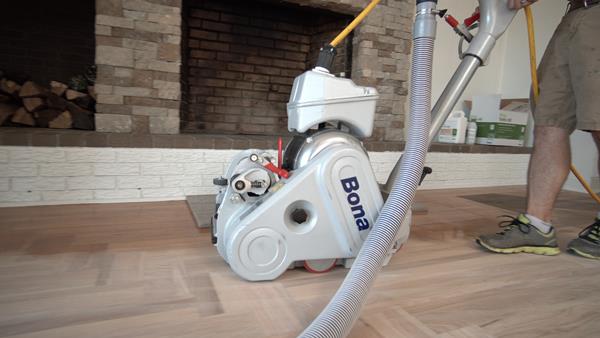
Available today, the report, which was conducted with input from Bona, states a 78 percent carbon footprint reduction when refinishing rather than replacing wood floors. Refinishing resilient floor surfaces can offer up to 92 percent reduction in carbon footprint versus replacing. Additionally, the report found that by refinishing hardwood or resilient floors a minimum of 90 percent savings in resources is realized which includes transport, electricity use, consumables, and materials.
Every year, 25 million square meters of hardwood and resilient flooring is replaced in Swedish public and commercial buildings. The IVL study, “Increasing resource efficiency in the Swedish flooring industry through floor refinishing,” found that refinishing these flooring surfaces can offer a significant decrease in carbon footprint, save on resources, and contribute to a circular economy relative to building materials.
“The norm today is new and fresh. Sales of new flooring material is supported by the linear business model we have in the construction industry today and refinishing is often perceived as more difficult,” said Maria Ahlm, author of the report at the IVL Swedish Environmental Institute. “However, our analysis and final roadmap support that in addition to the decrease in carbon footprint, floor refinishing is a viable alternative to increase resource efficiency in the Swedish flooring industry.”
“This research study offers a wholistic view and is tangible proof that refinishing a resilient or wood floor surface is more sustainable than replacement all while improving the appearance of a floor,” said Björn Johansson, global environmental manager, Bona. “For more than 100 years Bona has developed products and systems that offer a more sustainable floor renovation solution. To have the support of this report validating the benefits of the Bona System is affirming.”
The study analyzed the possibility of improving an overall carbon footprint by refinishing rather than replacing these flooring surfaces. Conducted over 12 months and focusing on the Swedish flooring market and the national construction industry in Sweden.
The first part of the report reviews the environmental impact from refinishing hardwood and resilient flooring by performing a life cycle assessment. The outcome was compared to the impact from producing and installing new flooring in terms of climate change and resource use. In addition, the result was used as a proof of concept that refinishing a floor can reduce the impact of climate change and minimize resource use compared to producing and installing new flooring.
In the second part of the study, a roadmap was developed as a strategic plan to define desired outcomes and outline important actions to overcome the barriers that separates the current state from the preferred result. The roadmap was developed together with stakeholders from the flooring industry including material suppliers, property owners, architects, and contractors.
The report is now available on the IVL Swedish Environmental Research Institute website.









